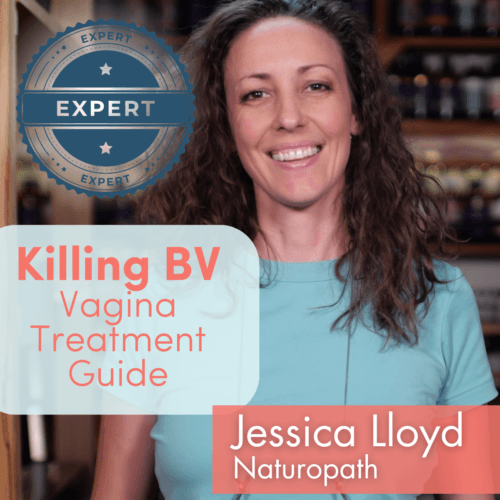Menorrhagia is the medical term for an abnormally heavy period with a normal cycle length.
There is nothing intrinsically wrong with heavy periods, and it doesn’t mean something is terribly wrong, but it can mean you need some attention. It’s important to weed out the different causes so you can find the right solution.
The overarching contributing factor in most heavy menstrual bleeding seems to be oestrogen. The reasons for heavy periods are complex and the cause varies considerably from woman to woman from no known cause to certain types of cancers.
If your period causes you severe pain, discomfort or impacts your life in serious ways, this is deemed abnormal and should be treated.1,2 Your doctor may not have non-medical solutions for you, so we recommend seeing a different kind of practitioner such as an acupuncturist, herbalist or naturopath.
Diagnosis of heavy periods/menorrhagia
It is very hard to tell just how much blood is coming out, with a ‘normal’ menstrual period producing about half a cup of blood. Spreading this blood out between numerous tampons, pads or menstrual cups, it can be tricky to tell just how much has actually come out.
Blood volume changes as a change in pattern is the key here. You know your periods better than anyone, but a measure of a problematic heavy period is basically a deviation from what is normal for you, since normal can mean a lot of things to a lot of people.3,4
Additionally, it is not abnormal for women to have unusual periods from time to time, including heavy ones.
Your period is heavy if:
- Bleeding continues for more than a week or three days longer than expected
- Occurs more than once every 21 days or arrives more than five days earlier than expected
- Exceeds half a cup in volume or requires more than two pads or tampons more than usual
Possible causes of heavy periods
Functional menorrhagia – no known uterine problems – ‘just heavy periods’
Functional menorrhagia is the term used to describe a pattern of heavy bleeding that doesn’t appear to have any medical cause.
Functional menorrhagia is heavily related to the areas of the brain and body that control fertility and hormones (the pituitary gland, hypothalamus and ovaries).
These three components all depend on each other heavily to function optimally. If one area is disrupted, say by stress or being overweight, it can set a hormonal trajectory resulting in heavy periods, swinging the pendulum too far in one direction.
Elements that affect the function of the hypothalamic-pituitary-ovarian (HPO) axis are not exercising, body weight, high fat intake, high or ongoing stress, and some medications.
Low iron/iron-deficient anaemia
Having low iron can cause you to bleed heavier and longer than normal because the little spirals on the ends of endometrial cells that act as a faucet require iron to turn the tap off, and stop bleeding.5,6
Paradoxically, if you are low in iron, you will bleed more because the tap is slower to turn off, and that causes further iron loss.
Below, the animation explains how your period occurs. Watch from the start.
The presence of iron specifically allows these special spiral blood vessels to be cut off during your period like turning off a tap, stopping the bleeding. If you are low in iron, the spiral blood vessel ‘tap’ remains turned on, and you bleed much more.

Uterine fibroids – non-cancerous uterine growths
Uterine fibroids are noncancerous growths on the uterine wall (in the myometrium, which is the muscular wall), and are very common, appearing in one in five women over 30.7
Symptoms include urinary disruptions as the tumours push on the bladder, and heavy bleeding.
From time to time fibroids may become malignant, but it is unusual. Diagnosis is made by ultrasound.
Uterine polyps – proliferation of endometrial cells
Little dangling grape-like uterine polyps are caused by changes to the endometrial tissue. Polyps are similar to endometrial hyperplasia, where the cells of the endometrium proliferate beyond their usual capacities.8
Oestrogen is responsible for this overgrowth, therefore it does not occur in women postmenopause.
Endometriosis – bleeding outside the uterine cavity
Endometriosis is characterised by the endometrial lining escaping its normal home in the uterine cavity and attaches itself to other organs and tissues within the abdominal cavity.9
Every month these small attachments grow (as they would to grow the endometrial lining, your period), causing inflammation and pain outside of a normal menstrual period, along with changes in bleeding patterns.
Any woman menstruating/ovulating can get endometriosis, but it’s most common between the ages of 20 and 30.
Adenomyosis – bleeding into the uterine wall
Adenomyosis is caused by endometrial cells growing inside the uterine wall, instead of on the outside where they should be.
Because endometrial cells are responsive to oestrogen, filling with blood, this condition can cause very heavy bleeding and a lot of pain, and occurs more often in women over 40.
Pelvic inflammatory disease (PID)
PID is an infection in the pelvic cavity and reproductive organs. A common cause of PID is undiagnosed gonorrhoea.
Symptoms of pelvic inflammation may include heavy bleeding, but other symptoms will also likely be present, including fever, fatigue and pain.
Contraception – IUDs and tubal ligation
Intrauterine devices (IUD) can cause heavy bleeding and pain at menstruation, bleeding between periods, particularly immediately after insertion (and for several months).10
If the pain is severe or bleeding excessive, the IUD may have been dislodged, or an infection may have developed.
Getting your tubes tied (tubal ligation) can also cause disruption to your menstrual cycle, with one such outcome being heavy periods. The extra bleeding may be due to either the operation itself or going off other forms of hormonal birth control.
Hormonal disturbances from other body systems
If you have blood clotting problems, nutrient deficiencies or disrupted hormonal levels, heavy periods can result.
Your blood clotting systems are important, even during your period, and any disturbances can result in heavy bleeding. Bleeding disorders are sometimes very serious indeed but can range from a straightforward nutrient deficiency (low iron levels) to leukaemia.
Von Willebrand’s disease – genetic clotting abnormality
A genetic clotting abnormality may be the cause of heavy bleeding if it starts with the onset of menstruation.11 A girl’s first period may be like a scene out of Texas Chainsaw Massacre.
Adrenal or thyroid hormone interruptions
Adrenal hormones can be disrupted from certain drugs or other disorders, and thyroid problems can also result in changes to menstruation.
Oestrogen excess or oestrogen dominance
Oestrogen excess can be brought on by a liver that is not detoxifying metabolic wastes quickly enough, including excess hormones. The bowel is also responsible for clearing oestrogen, so there are several avenues to explore here.
Poor clearance leaves much more oestrogen in the blood than is ideal, which may result in oestrogen excess symptoms like heavier bleeding.
If you have an under-functioning or overloaded liver or constipation, you are likely to see menstrual effects.
Pregnancy
Abnormal bleeding can be triggered by pregnancy and may be a sign of a miscarriage.
What to do about heavy uterine bleeding
Treating abnormal uterine bleeding may require a combined approach with your doctor and other health practitioners.12
You need to be examined and tested to rule out serious causes, then you can start on the pathway of treatment of your choice.
There are many ways to treat heavy periods, with finding the root cause the most appropriate. There are some excellent herbal medicines used for haemorrhaging and heavy bleeding like therapeutic dose cinnamon, for example.13
There are many excellent non-drug and non-surgical options that should be exhausted before an IUD, the pill or a hysterectomy are considered.
Visiting a naturopath or herbalist can be a good first step to see if the problem can be corrected at the early stage. If you are concerned about abnormal bleeding, see your doctor to be examined thoroughly.
References
- 1.Dutton B, Kai J. Women’s experiences of heavy menstrual bleeding and medical treatment: a qualitative study in primary care. Br J Gen Pract. Published online December 20, 2022:e294-e301. doi:10.3399/bjgp.2022.0460
- 2.Gokyildiz S, Aslan E, Beji NK, Mecdi M. The Effects of Menorrhagia on Women’s Quality of Life: A Case-Control Study. ISRN Obstetrics and Gynecology. Published online July 8, 2013:1-7. doi:10.1155/2013/918179
- 3.Oehler MK, Rees MCP. Menorrhagia: an update. Acta Obstet Gynecol Scand. Published online May 2003:405-422. doi:10.1034/j.1600-0412.2003.00097.x
- 4.Sriprasert I, Pakrashi T, Kimble T, Archer DF. Heavy menstrual bleeding diagnosis and medical management. Contracept Reprod Med. Published online July 24, 2017. doi:10.1186/s40834-017-0047-4
- 5.Mishra V, Verneker R, Gandhi K, Choudhary S, Lamba S. Iron deficiency anemia with menorrhagia: Ferric carboxymaltose a safer alternative to blood transfusion. J Mid-life Health. Published online 2018:92. doi:10.4103/jmh.jmh_121_17
- 6.Munro MG, Mast AE, Powers JM, et al. The relationship between heavy menstrual bleeding, iron deficiency, and iron deficiency anemia. American Journal of Obstetrics and Gynecology. Published online July 2023:1-9. doi:10.1016/j.ajog.2023.01.017
- 7.Uimari O, Subramaniam KS, Vollenhoven B, Tapmeier TT. Uterine Fibroids (Leiomyomata) and Heavy Menstrual Bleeding. Front Reprod Health. Published online March 4, 2022. doi:10.3389/frph.2022.818243
- 8.van Dijk MM, van Hanegem N, de Lange ME, Timmermans A. Treatment of Women With an Endometrial Polyp and Heavy Menstrual Bleeding: A Levonorgestrel-Releasing Intrauterine Device or Hysteroscopic Polypectomy? Journal of Minimally Invasive Gynecology. Published online November 2015:1153-1162. doi:10.1016/j.jmig.2015.06.016
- 9.Jain V, Chodankar RR, Maybin JA, Critchley HOD. Uterine bleeding: how understanding endometrial physiology underpins menstrual health. Nat Rev Endocrinol. Published online February 8, 2022:290-308. doi:10.1038/s41574-021-00629-4
- 10.Fouda UM, Yossef D, Gaafar HM. Uterine artery blood flow in patients with copper intrauterine device-induced abnormal uterine bleeding. Middle East Fertility Society Journal. Published online July 2010:168-173. doi:10.1016/j.mefs.2010.07.003
- 11.Ragni MV, Machin N, Malec LM, et al. Von Willebrand factor for menorrhagia: a survey and literature review. Haemophilia. Published online February 4, 2016:397-402. doi:10.1111/hae.12898
- 12.James AH. Heavy menstrual bleeding: work-up and management. Hematology. Published online December 2, 2016:236-242. doi:10.1182/asheducation-2016.1.236
- 13.Livdans-Forret A, Harvey P, Larkin-Thier S. Menorrhagia: a synopsis of management focusing on herbal and nutritional supplements, and chiropractic. J Can Chiropr Assoc. 2007;51(4):235-246. https://www.ncbi.nlm.nih.gov/pubmed/18060009
The most comprehensive vaginal microbiome test you can take at home, brought to you by world-leading vaginal microbiome scientists at Juno Bio.
Unique, comprehensive BV, AV and 'mystery bad vag' treatment guide, one-of-a-kind system, with effective, innovative treatments.
Promote and support a protective vaginal microbiome with tailored probiotic species.





